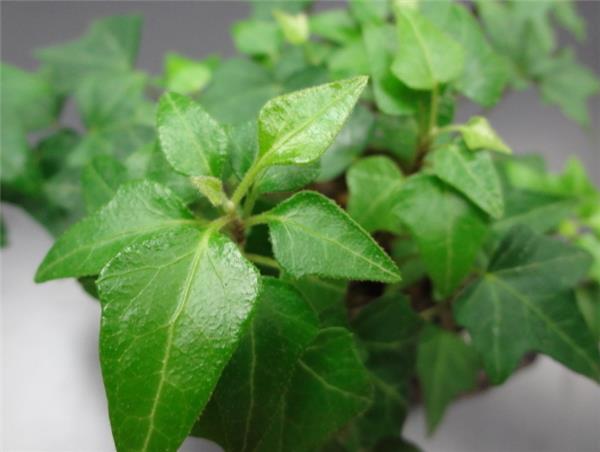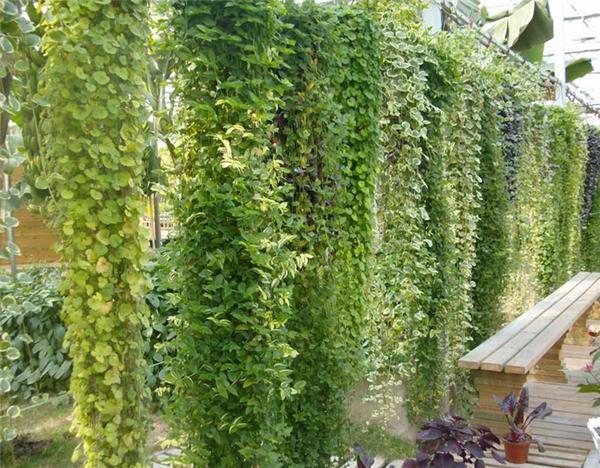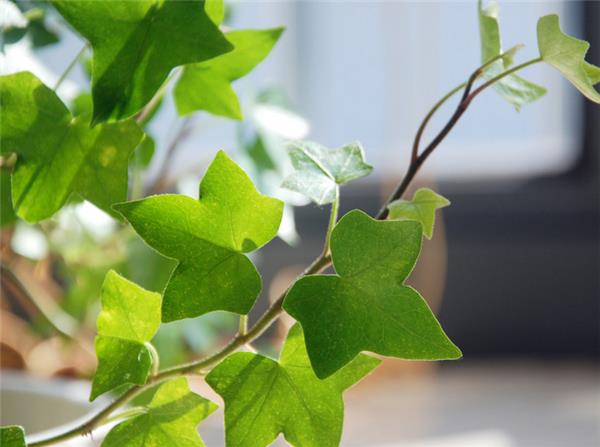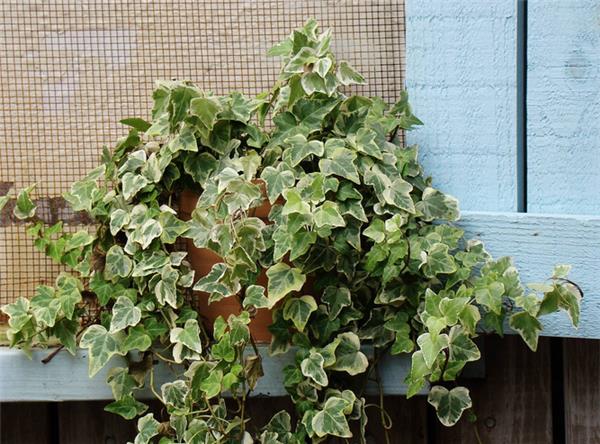Culture methods and matters needing attention of Ivy
Ivy is now a more popular indoor potted plant, the most common is placed in the wider living room, study and bedroom, giving people the feeling of elegant, simple, is a beautiful shape, neat, but also a world-famous new generation of indoor foliage plants, the following for you to introduce the breeding methods of ivy and matters needing attention.

Culture methods of Ivy
1. The temperature should be suitable: ivy likes warmth, and the suitable temperature for growth is 20 ℃-25 ℃. It is afraid of heat and is not resistant to cold. Therefore, when placed in indoor maintenance, attention should be paid to ventilation and cooling in summer, and the room temperature should be kept above 10 ℃ in winter, and the lowest should not be less than 5 ℃.
2. The light should be moderate: ivy is light-loving and shade-tolerant. When cultured under semi-light conditions, the internodes are shorter, the leaf shape is consistent, and the leaf color is bright, so it is appropriate to culture in bright indoor light. If you can put outdoor shade for a period of time in spring and autumn, so that you can see more sunshine in the morning and evening, then the vitality will be exuberant and the leaves will be green. However, we should pay attention to prevent the direct light, otherwise it is easy to cause sunburn.
3. Watering should be moderate: watering in the growing season should be dry and wet, and the basin soil should not be too wet, otherwise it is easy to cause rotten roots and fallen leaves. The room temperature is low in winter, especially to control watering and keep the basin soil slightly wet. The northern winter climate is dry, it is best to spray Duchuan once a week with water close to room temperature, in order to maintain air humidity, the plant appears alive, the leaf color is green and shiny.

4. Fertilization should be reasonable: when ivy is cultivated at home, the basin soil should be composed of Sichuan rotten leaves or charcoal soil mixed with river sand and a small amount of bone powder, and thin pancake fertilizer and water should be applied once every two or three weeks in the growing season. Do not apply fertilizer in summer and winter. Do not apply nitrogen fertilizer when fertilizing, otherwise, the patterns and patches on the leaves of mosaic varieties will fade to green. The ratio of nitrogen, phosphorus and potassium should be 1% and 1%. During the peak growing season, the leaves are sprayed with 0.2% potassium dihydrogen phosphate once or twice, which will make the leaves look more beautiful. However, attention should be paid to avoid contaminating the leaves when applying liquid fertilizer, so as not to cause the leaves to scorch.
5, pruning should be timely: when the seedlings grow to a certain height, they should pay attention to pick the heart in time to promote its multi-branching, and the plant shape will appear plump.
6. Potted plants should set up pillars: in order to make them grow upward, add infinite interest to the beautification of the bedroom space, or make a hanging basin cultivation, the soft branches and vines naturally droop and float, chic to the extreme, and blend into the pleasant enjoyment of evergreen throughout the four seasons. Therefore is the modern living room, the use trial, will perform the plug and so on the place rare Chui Teng Guan Ye Jiapin. The basin is usually changed every one or two years.

Matters needing attention in Ivy Culture
The main results are as follows: (1) it can be planted when the branches stop growing. Pot culture soil had better use loose and fertile soil mixed with garden soil, rotten leaf soil and sand, change the basin once in 1-2 years, keep the basin soil moist during the growing period, and often spray water to the leaf surface and the surrounding ground to improve air humidity; move into the room in winter, you can survive the winter above 3 ℃, put it in a place with sufficient light, pay attention to ventilation and reduce watering times.
(2) the newly planted plants were coring after sprouting in spring to promote their branching. Perennial plants should be pruned and cut off dead branches, weak branches, disease and insect branches.
(3) spray the leaves of ivy regularly to prevent the dry air from causing the leaf tips to be brown and withered.

(4) if you put it on the windowsill or several blocks to make the stem droop, it appears disorganized and the ornamental value is not high. It can be used as a wall beautification material in the indoor garden, pulling string to the wall for them to wind and climb. If a single basin is furnished, bamboo grate or No. 8 lead wire should be used to set the beat, so that the stem vine can be evenly distributed on the beat by artificial traction, and pruning should be strengthened to prevent the disorder caused by multi-layer entanglement of the stem vine. There are many racket forms for potted ivy climbing, which can be tied up according to personal hobbies. The common racket forms are spiral, cylindrical, spherical, fan and so on.
(5) Ivy has strong cold resistance and can survive the winter safely in the general family room. Water less and stop topdressing in winter. Put it near the south window to let them see more sunshine. In the room without heating equipment, if the leaves fall because of the low temperature, as long as the stem vine is not frozen, it is not necessary to take care of it. After the coming spring is warm, a strong pruning will be carried out to let the dormant buds in the lower part of the stem sprout and produce new stem vines, and then traction and binding, so that the plant can be renewed once a year, and the size of the plant can be controlled within a certain range, so as to facilitate indoor furnishings.
Let the dormant buds in the lower part of the stem germinate and give birth to new stem vines, and then re-traction and binding, so that the plant can be renewed once a year, and the size of the plant can be controlled within a certain range, so as to facilitate indoor display.
Related
- Wuhan Hospital Iron Tree Blooming Result Was Instantly Frightened by the Gardener Master
- Which variety of camellia is the most fragrant and best? Which one do you like best?
- What is the small blue coat, the breeding methods and matters needing attention of the succulent plant
- Dormancy time and maintenance management of succulent plants during dormancy
- Minas succulent how to raise, Minas succulent plant pictures
- What are the varieties of winter succulent plants
- How to raise succulent plants in twelve rolls? let's take a look at some experience of breeding twelve rolls.
- Attention should be paid to water control for succulent plants during dormant period (winter and summer)
- Watering experience of twelve rolls of succulent plants
- Techniques for fertilizing succulent plants. An article will let you know how to fertilize succulent plants.



